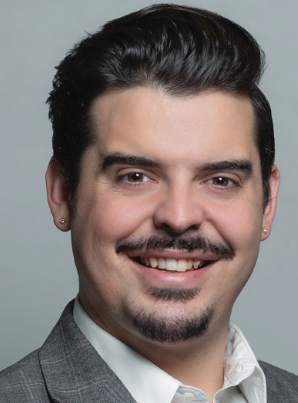While many went home for Fall Break, students decided to participate in Hamilton’s annual Wall Street Prep Fall Break Bootcamp. This intensive course was held on Oct. 16 and 17, from 9 a.m. to 5 p.m. each day.
Many students take online Wall Street Prep courses in order to learn more about finance. Wall Street bootcamps are distinct in offering in-person instruction, where experienced instructors come to teach students in a classroom setting. Hamilton’s bootcamp was free to all student participants, made possible by the generosity of Howard Morgan ’84.
This particular bootcamp offered courses on accounting and financial modeling, aiming to provide technical training and resources that prepare students for careers in finance. Of the 50 participating students, the majority were first and second-year students, with some juniors and seniors. Many students entered the course with no prior exposure to accounting, while others had some background in the field. Last week, Hamilton was fortunate enough to have Mike Hacke teach the course. Hacke has experience as a Credit Risk Analyst at Morgan Stanley and an Associate Vice President in Equity Research at Barclays. Additionally, he was a Senior Manager at Macquarie Group (an Australian financial services company) and is now working as the Founder of Steel City Capital Investments. Leveraging his background in finance, Hacke transformed a broad range of accounting and financial modeling concepts into a concise, skills-focused curriculum. Through case studies and Excel-based exercises, he emphasized analytical approaches used in financial statement analysis, forecasting, and valuation. This rigor ensured students developed practical, industry-ready proficiency.
The first day was heavily focused on accounting principles and building the three-statement model, using a lemonade start-up business case study. Here, students would be introduced to the different components of each model, and they would interact with each other across models (i.e., depreciation on the income statement, balance sheet, and cash flow statement).
The second day built on the newly developed accounting skills and transitioned into an in-depth focus on financial modeling. Using Apple as a case study, students learned to forecast the three-statement model using growth assumptions. This directly transitioned into the last part of the course, where students learned the time value of money and started to build a discounted cash flow (DCF) model.
Because Hamilton does not offer finance courses, many students choose to concentrate in Economics to strengthen their quantitative reasoning, analytical thinking and understanding of market behavior. While the Economics curriculum provides a strong theoretical foundation, programs like Wall Street Prep bridge the gap between academic theory and professional practice. By teaching students how to build the three-statement model, perform valuation analyses and interpret financial statements, Wall Street Prep complements Hamilton’s liberal arts education with the technical and practical skills necessary to pursue careers in finance. In fact, many finance employers prefer liberal arts students because they value critical thinking skills and creativity.
Wall Street Prep is not the only resource for Hamilton students to build their technical skills. Many students take finance and accounting courses at the London School of Economics over the summer. Others participate in Dartmouth College’s Tuck Business Bridge Program, an intensive pre-professional experience where students from liberal arts backgrounds collaborate to analyze companies and build DCF models. Whether through these immersive summer programs or by completing Wall Street Prep online, Hamilton students have numerous ways to bridge the gap between a liberal arts education and the technical demands of finance.
























